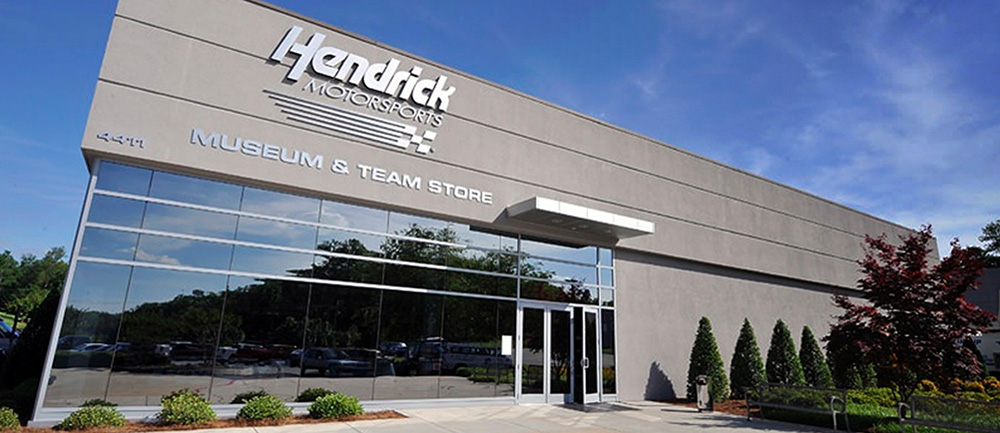
#EnduranceWeek: Car preparation, driver comfort key to reaching 600 miles
CONCORD, N.C. – Racing 600 miles is a test unlike anything else throughout the NASCAR Sprint Cup season. A Sunday matinée turns into an all-night endurance battle that tests both man and machine. This is a race where being prepared and being comfortable can take you a long way.
#EnduranceWeek: Watch Sunday’s Sprint Cup event at 6 p.m. ET on FOX; listen live on PRN.
Preparation: The seven post
To prepare for race day, Hendrick Motorsports uses a variety of tools, but one notably gives the 10-time Sprint Cup champions an opportunity to prepare for Sunday’s 600-mile Sprint Cup event at Charlotte Motor Speedway. That’s the seven post. Nestled in a corner of the Nos. 48 and 88 shop, it affords car chiefs and engineers the opportunity to “shake down” a car in what Jon Plyler calls a “lab environment.”
“It takes the changing weather conditions, changing track conditions and driver out of the equation,” said Plyler, who has handled the seven post since it was built at Hendrick Motorsports in 2006. “That is good for us because we want to understand how the suspension responds to changes we make to the setup and how that will impact handling for each driver.”
The rig connects to each Hendrick Motorsports Chevrolet SS with seven actuators and uses a stored drive file created after prior track testing to send the race car on a simulated lap of a track. When the test begins, the wheels don’t actually turn, but the suspension still encounters the downforce and braking that comes with the bumps and turns of the lap.
This technology is especially important when conducting fatigue tests on the suspension components to see if the car is durable enough for the season’s longest race. When these fatigue tests take place, the car is run through a simulation of a full 600-mile race– that’s nearly four hours according to the May 2012 event that Kasey Kahne won. In some instances, the car may run more than 600 miles in a simulated race in order to ensure it is the best it can be.
“If we’re doing durability testing, it’ll be at least a race if not a race and a half or two,” Plyler said. “We have to make sure it makes the distance. All of the vehicle components are more robust and durable than they once were so you typically don't see the failure you used to see. But still, the extra 100 miles can really take its toll.”
At the track: Driver comfort
Along with car preparation, maintaining a driver’s comfort for 600 miles is one of the most important things that can be done throughout the course of the race. Whether it is making sure his air conditioning is working properly or giving him an iced towel to cool off his legs, the driver’s comfort is a major priority for crew members.
Adam Jordan, a mechanic on the No. 88 National Guard Chevrolet SS, is one of the crew members responsible for ensuring the comfort of driver Dale Earnhardt Jr. This means he has to help keep Earnhardt hydrated and alert throughout the 600.
“We have a drink bag under his seat that holds about 100 ounces of fluid that is insulated and cooled with ice packs,” Jordan said. “So, through 600 miles, that’ll stay cool. Especially at night."
To go along with the drink bag, Jordan makes sure Earnhardt has energy chews, little blocks of gel similar to gummy bears, in the door pad next to him so he can get to them at any time. These quick calorie bursts help fuel his body, which is sure to lose 10-15 pounds of water weight in a car that reaches 130 degrees Fahrenheit during the 600-mile contest. According to the Gatorade Sports Science Institute, when a NASCAR driver is dehydrated, his hand/eye coordination decreases, he may experience physical and mental fatigue, and his reaction time becomes delayed.
“During cautions we just remind him to eat, stay hydrated, because sometimes he forgets that it’s there,” Jordan said.
Along with reminding Earnhardt to stay hydrated, Jordan has a fresh drink bottle prepared just in case he needs one during a pit stop.
Hydration aside, another comfort issue that arises from racing in the 600 is the day-to-night transition. During the day, most drivers prefer tinted visors on their helmets in order to block out the sun, much like when someone puts on sunglasses when they go outside. The opposite can be said for the evening, when most drivers prefer clear visors for better view. In order to accommodate this, clear visors are covered with tinted “tear offs,” laminated sheets of plastic, to give them that tinted view until the sun goes down. Then, as the sun begins to set, the “tear offs” can be removed and drivers are able to have a clear view throughout the night.
Earnhardt and his Hendrick Motorsports teammates will line up for the 600-mile event at 6 p.m. ET this Sunday, May 26. Tune in live to FOX or PRN.







